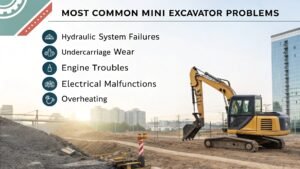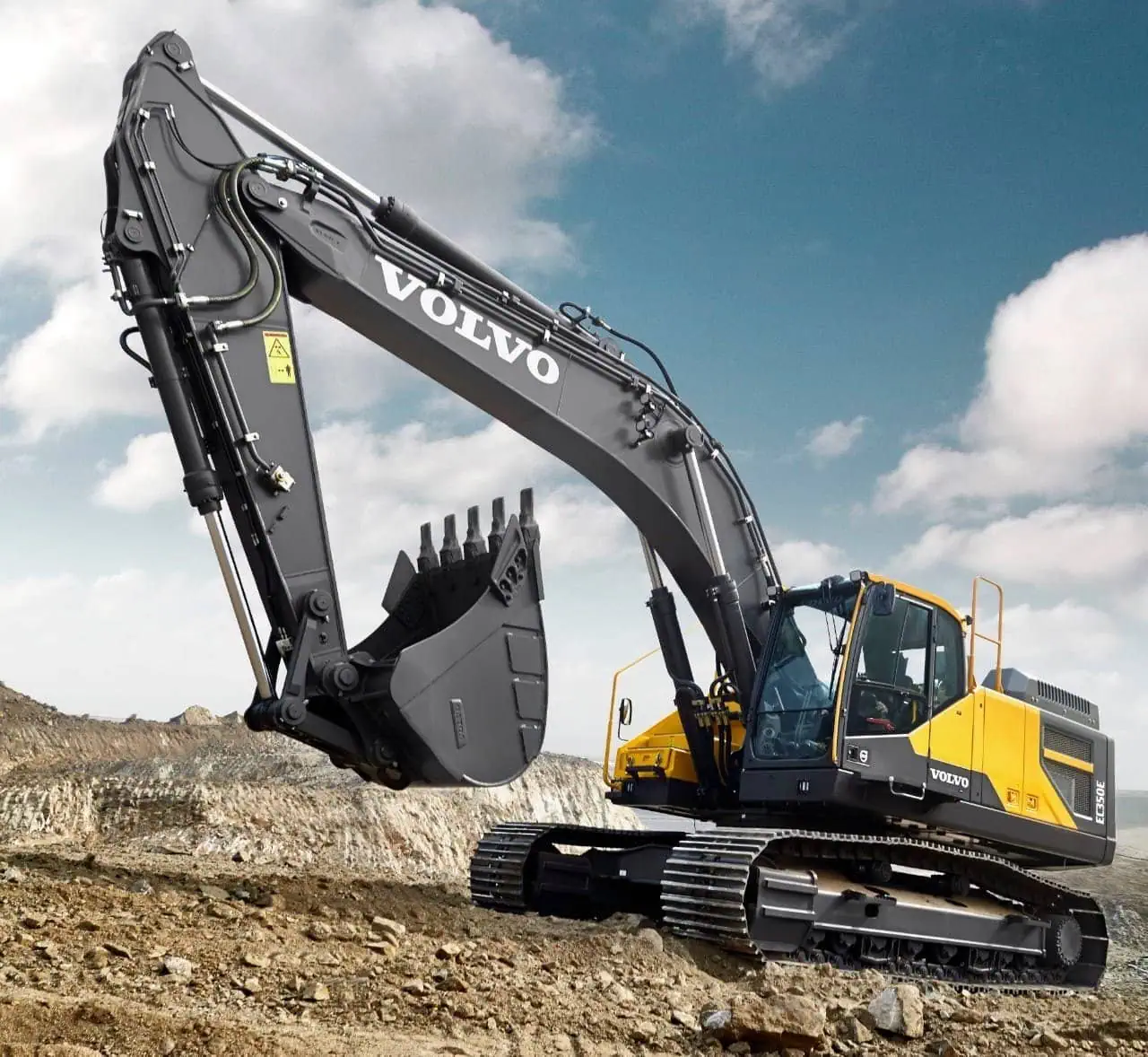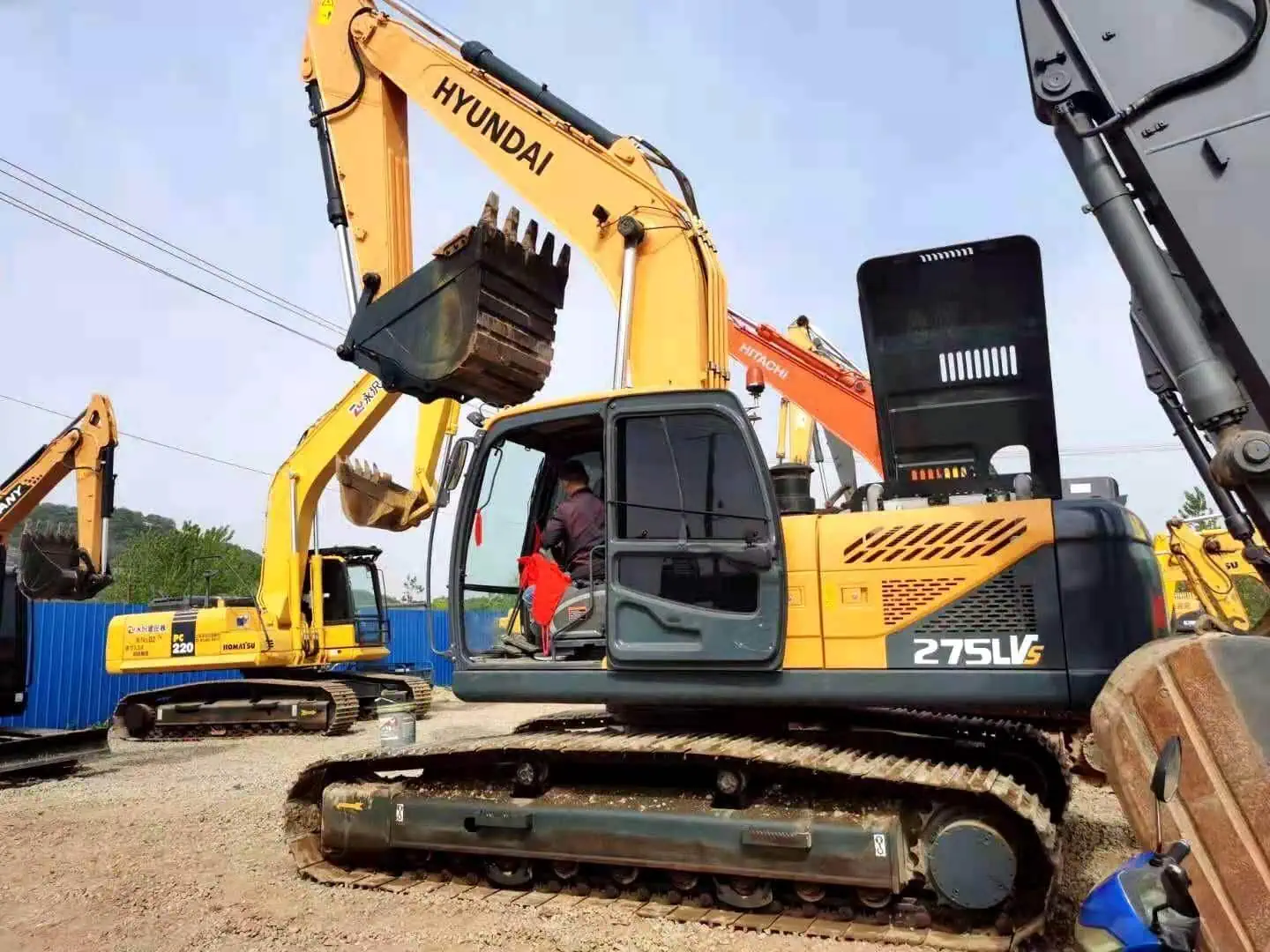Is choosing the right excavator bucket size making your head hurt? The wrong size can cause you to be inefficient, waste a ton of fuel, and slow down the work cycle. See how the right size bucket can unlock your machine’s performance, cut your costs, and get your jobs finished faster than you ever thought possible!
Choosing the correct bucket size for your excavator is essential for optimizing productivity, reducing fuel consumption, and avoiding unnecessary wear on your machine. Factors like project type, material, and machine compatibility play a key role in determining the right size. Whether you’re working with a mini or full sized excavator, selecting the perfect bucket ensures efficient operation, better maneuverability, and faster cycle times, saving you both time and money. Learn how to make the right choice for your project needs.
Now, let’s explore how to choose the ideal bucket size based on your specific project requirements.

Оглавление
ПереключатьWhat is Excavator Bucket Size, and How is it Measured?
Excavator bucket size refers to the capacity and dimensions of the bucket that fits the arm of the excavator. You’ll get buckets sorted by width, capacity, and if they are good for materiel handling.
- Ширина: The width of the bucket is the measurement across the opening of the bucket. This number gives you a good idea of how wide of a swath you can cut in a single pass.
- Capacity: Capacity is given in cubic yards or cubic meters, and it is the volume of material the bucket can hold. This is directly related to how much material you can carry in one cycle of the bucket.
- Material Handling Ability: This boils down to the weight and type of material the bucket can effectively carry and handle without overloading the machine.
Different bucket types include:
- General-purpose buckets: These are very versatile and used for most digging and loading operations. They are the most commonly found on most construction and mining projects.
- Grading buckets: These buckets are flattened and used for leveling or grading dirt and other materials.
- Trenching buckets: These buckets are narrow and used for digging ditches or trenches. They are usually between 6 and 24 inches wide.
- Rock buckets: These buckets are designed to handle rock and other abrasive materials with a specially reinforced construction.
Mini excavators usually take smaller buckets, often ranging from 12 to 24 inches wide. Larger excavators can take buckets up to 120 inches wide or more depending on the specific machine.
What Factors Should I Consider When Choosing the Right Excavator Bucket Size?
Тип проекта
The project you are working on is one of the main considerations for the size of the bucket you need. Here are some examples of how the project type might affect the size of the bucket you choose:
- Excavation: For heavy-duty excavation projects such as digging footings or trenching for utilities, you will typically use a larger bucket to move more material at one time.
- Grading: If you are doing a lot of land leveling or grading, you will want to use a grading bucket. These buckets are wider and flatter to give you a nice, smooth surface.
- Trenching: Trenching buckets are made to dig deep, narrow trenches. A mini excavator’s trenching bucket might range from 6 to 12 inches wide, where large excavation buckets could be from 18 to 48 inches, depending on the trench’s purpose.
Mini excavators are perfect for doing smaller, more precise work. They have smaller buckets because their jobs are typically in smaller, confined areas or tight urban sites. Larger excavators are made for big work, so they have larger buckets that allow the machine to pick up and move more material.
Machine Compatibility
It’s an excellent point. It’s important to understand and select a bucket size compatible with the machine size and lift capacity. If you put too large of a bucket on a small mini-excavator, you will overload and damage the machine. As an example, putting too small of a bucket on a large excavator decreases the machine’s efficiency. Key factors to consider are:
- Excavator’s lift capacity: An excavator’s lift capacity is a measure of how much weight it can safely carry. A larger bucket will add to the amount of weight you are carrying with the machine, which can damage it if the weight being added exceeds the capacity of the machine.
- Weight distribution: Be sure that the weight of the bucket and whatever load is in the bucket is evenly distributed so the machine’s hydraulic system does not have to struggle.
Soil and Material Types
The size and type of material being moved can also affect the size of the bucket you need. Some materials are heavier or bulkier than others, which means you need a larger bucket to handle it effectively.
- Loose or soft soil: For digging in loose or soft soils, smaller buckets are typically sufficient, as they can scoop up the material quickly without overloading the machine.
- Harder materials: In contrast, digging through compacted clay, gravel, or rock requires larger buckets that are designed to handle heavier loads.
- Heavy-duty materials: If you’re working in a mining or quarry setting where dense materials are involved, larger, reinforced buckets are necessary to handle heavy, abrasive materials without excessive wear and tear.
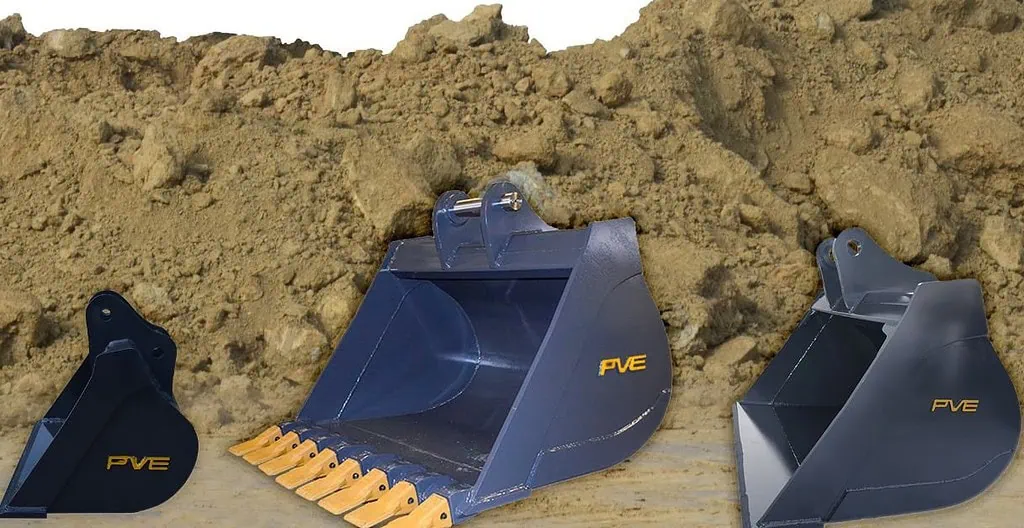
How Does Bucket Size Affect Excavator Efficiency and Performance?
Efficiency Gains
The right bucket size maximizes the efficiency of your excavator. If your bucket is too small for the job, you’re going to have to make more scoops with the экскаватор. More scoops equals more trips, more fuel, and more wear on the machine. However, a bucket that’s too big will slow down your cycle time with the excavator. Instead of digging easily, you’re straining to fill the oversized bucket.
Then, once you lift that bucket, the machine works harder through the entire cycle because the sheer weight of the material may exceed the excavator’s capacity. You buy the machine per hour and operate it per hour, and a larger bucket than necessary will actually cost you money in the long run because of higher fuel costs and slower operations.
Better Maneuverability
Mini excavators, with their smaller bucket sizes, are perfect for fitting into tight spaces. When you’re doing things like landscaping around a house or digging small footings and trenches, a mini excavator with a smaller bucket works great because you can maneuver in tight spots. Instead of having to cut everything square and clean, most of the time, you’re cutting a footprint in a confined space to build or install something.
Cost Efficiency
Choosing the right size bucket can affect your costs drastically too. The right size bucket can minimize fuel consumption and also reduce downtime caused by trying to pick and place oversized material. Not to mention that choosing the right size bucket will reduce the wear and tear on the machine itself, reducing maintenance costs and the overall life of the machine.
Common Mistakes to Avoid When Choosing Excavator Bucket Size
Overestimating Bucket Size
It can be tempting to opt for a larger bucket thinking it will increase productivity. However, using a bucket that’s too large can lead to:
- Difficulty in handling: An oversized bucket can be difficult to control, making it harder for the operator to maneuver and execute precise work.
- Increased wear on the excavator: Larger buckets put more strain on the hydraulic system and engine, leading to quicker wear and potentially higher repair costs.
Underestimating Bucket Size
Choosing a bucket that’s too small makes the process longer. It will take more passes to move the material. It can also take more time to move the materials because they’re unaware that this means the cost will also get higher because in most cases, time is money on a site.
Mismatching Bucket and Excavator
Every excavator has a recommended or appropriate bucket size for that model of excavator. If you put the wrong size bucket on an excavator , it can be dangerous. Outside of that, nobody can really tell you what bucket works best for what you have to do. And in fact, sometimes a different size or type of bucket is necessary for different parts of your project. Always check your excavator’s specifications to make sure you’re using the right size bucket for your machine.

How to Choose the Right Bucket Size for My Mini Excavator?
As with larger machines, bucket performance is key when operating a mini excavator, so be sure to match your bucket size to the job at hand. Selecting the right bucket for your mini excavator involves taking a few factors into account. These include the type of work you’ll be doing, the material you’ll be handling, and your machine’s capacity for handling and performance.
Mini Excavator Bucket Sizes
The smallest bucket size would be around 12 inches and the largest around 24 inches. A 12- or 18-inch bucket is ideal for detailed trenching or digging where you need to dig in a tight space and be precise, while the bigger 18- and 24-inch buckets can be used for general excavation work when you don’t need to be as precise.
Common Applications for Mini Excavators:
- Trenching: Narrower buckets, like 12-inch or 18-inch, are going to be more common for trenching since they can get the necessary depth but with more precision, which is important for utility lines or drainage systems. These machines are also going to be really good for trenching around a house or in an urban situation where you don’t have a lot of space to dig at all. They are also going to be very good at trenching around a residential house that has been framed, and everything else is done.
- General Digging: For general digging or excavation work, you are going to be in an 18 to a 24-inch bucket. That’s your bread and butter, and you are trying to find a sweet spot between how much material you can move with the machine and how much you can pick up with the machine and not be too slow when you are trying to do things.
- Landscaping and Grading: If you are doing any kind of landscaping applications with a mini excavator, you are going to be in a 24-inch bucket for most of that application. You will level the soil, dig a foundation for a small wall, that kind of thing.
Bucket Sizing Tips:
- Balance the load: Make sure your bucket choice does not overload your machine. A larger bucket might get you in trouble if you’ve got a hill, and it will pitch you over to the side on uneven ground.
- Material Type: If you’ve got a material like gravel or compactable fill material, you’re going to want to step up to a more heavy-duty, reinforced bucket so you don’t twist your bucket or bend the ears when you are really working to rip into that stuff.
- Efficiency Considerations: You don’t want to take a bucket that’s too big and get your machine into trouble, or a bucket that’s too small and make your cycles slow and painful. You are going to consume a lot of fuel, and it’s going to make your life miserable.
By selecting the right bucket, you enhance that machine’s performance. You’re going to be more fuel efficient and you’re going to get your project done faster with the right bucket.
How Does Bucket Size Impact Fuel Consumption?
The size of the bucket directly determines how much fuel you burn. When you’re moving a big bucket, you burn a lot of fuel. A big bucket has a larger surface area than a small bucket and, therefore, requires more horsepower to move the material. As you increase the size of the bucket, you’ll need to create more horsepower using more fuel to move the same amount of material.
- Overloading and Fuel Inefficiency: When using a bucket that is too large for the material or the excavator, the machine has to work harder to lift and carry the load. This results in greater engine strain and higher fuel consumption. Additionally, the larger the bucket, the more material the excavator must handle, leading to longer cycle times and more fuel usage per cycle.
- Optimizing Fuel Efficiency: On the other hand, choosing the right bucket size that matches the material and task at hand ensures that the excavator is operating within its optimal load capacity. This reduces fuel waste and increases overall productivity by allowing the excavator to complete more cycles in less time.
- Bucket Size and Load Efficiency: A correctly sized bucket is efficient in handling the specific load it is designed for. For example, when dealing with soft soil, a smaller bucket may be able to handle the task more effectively and with less energy expenditure.
- Lowering Maintenance Costs: By using the right bucket size, the excavator works more efficiently, which also leads to less wear and tear on the engine, hydraulic system, and other components. This helps to reduce maintenance costs over time, further improving the cost-effectiveness of your project.
The right bucket size can also lead to a reduction in overall operating costs. When wheel loader operators are handling the amount of material the machine was designed and built to handle, they will use less fuel. Whether moving material on flat ground or up and down grades, keeping the bucket full and the machine moving is key to fuel and engine efficiency.
Common Bucket Sizes for Mini Excavators
Mini excavators are versatile machines equipped for a variety of small-scale tasks, so they typically use bucket sizes ranging from 12 to 24 inches. This range of buckets helps when digging trenches, landscaping, and conducting small-scale excavation work. Here are the most common bucket sizes used with mini excavators:
12-Inch Bucket:
A 12-inch bucket is ideal for precise tasks such as trenching, digging narrow foundations, or working in tight spaces. It’s commonly used in projects requiring high precision, like installing plumbing or electrical lines.
18-Inch Bucket:
An 18-inch bucket is versatile and commonly used for general excavation tasks. It provides a balance between size and maneuverability and can handle light to medium excavation work, such as digging small footings, landscaping, or foundation work.
24-Inch Bucket:
A 24-inch bucket is great for heavier digging work on a mini excavator. It can be used for larger excavation jobs, such as digging holes for trees, drainage ditches, or dismantling small structures. This size is great when you need to move a lot more material.
Other Sizes:
Mini excavators can sometimes also used as small as 6 inches or as big as 30 inches; however, those sizes are for specialized reasons and specific jobs. Fine grading and removing large amounts of material may require a specialized bucket.
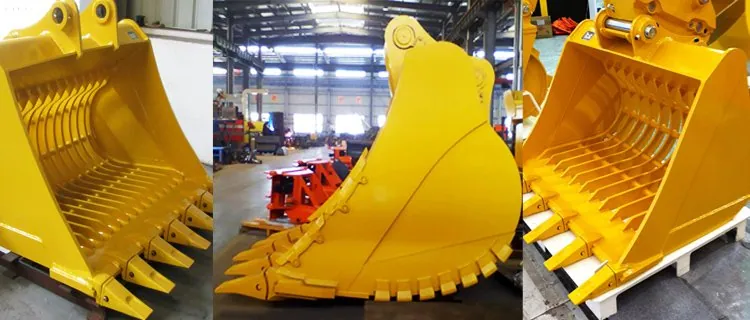
Can I Use a Larger Bucket on My Mini Excavator?
While it may seem tempting to use a larger bucket on your мини-экскаватор to increase productivity, it’s important to consider the potential downsides. Here’s why using an oversized bucket can be problematic:
Compatibility issues
Mini Excavators are designed to work with specific sizes of buckets; however, if you use a large bucket on a smaller excavator, it can cause stability and maneuverability issues. This is especially important when working on uneven terrain or in tight places where you need the machine to be as stable and controllable as possible.
Overloading the mini excavator
If you put a bucket on a mini excavator that is too big, the machine will work harder to get the bucket off the ground. This means it’s going to put stress on more components, such as the hydraulic system, engine, and structure. When you overload a mini excavator, you will cause more wear and tear and quite possibly reduce the life of the machine.
Increased Maintenance
Using an incorrect bucket size will lead to faster wear and tear on your entire machine. Everything from the undercarriage to the hydraulic system will suffer more strain and break down sooner, resulting in costly repairs. By not matching your bucket size to your mini excavator, you will decrease the life expectancy of your machine and will see fewer hours of productive use out of it.
Alternative Solutions
When in this situation, it is best to take the time to measure the capacity of the bucket you’re using and compare it with the capacity of the mini excavator. If the capacities don’t match, you need to change the configuration rather than continue to use a wrong-sized bucket. By making the simple change of using the correct size bucket on your mini excavator, you can save yourself untold amounts of money in repair costs and prolong the life of your machine.
How to Choose the Right Bucket Size Based on Soil Type?
Material Handling
Soil and material type heavily influence the bucket size:
- Loose or soft soil: For loose or sandy soils, smaller buckets are generally sufficient, as they can scoop up materials without putting too much strain on the machine.
- Rock or compacted soil: Larger buckets designed to handle heavy, rocky materials are necessary to ensure effective digging and hauling.
Heavy Material Handling
If you’re working with hard material or material that will be hard on the bucket itself, order the reinforced version of the bucket or bucket style so that you’re making your hardest-wearing and heaviest-duty implement the bucket that will stand up to the rocks and the wear and tear. For mining, quarrying, and heavy-duty operations, match your bucket to the operation.

Заключение
I hope this information helped you in selecting the proper bucket size for your excavator, whether large or mini. The proper choice means the greatest production, the lowest fuel burn, and the most consistent and efficient operation on the job. Again, whether it’s a 2,000-pound mini excavator or a 200,000-pound machine, you need to buy the best bucket for the job. For the material or the process you have, get the best bucket you can get built for that operation.
If it’s hard material, takes a lot of abuse, or just doesn’t need to fall apart, order the reinforced version of the bucket or bucket style so your hardest wearing and heaviest implement you have out there is the bucket that stands up to the rocks and the wear and tear. In mining, quarrying, or your heaviest operation, make sure the bucket can take it.Our company HIXEN mainly deals in various types of second-hand construction machinery and accessories. If you would like more information about your purchase, please feel free to свяжитесь со мной.


